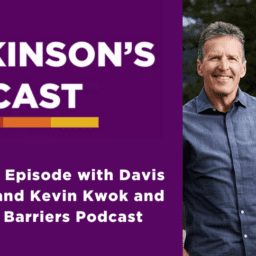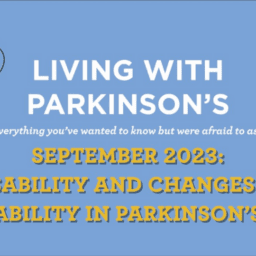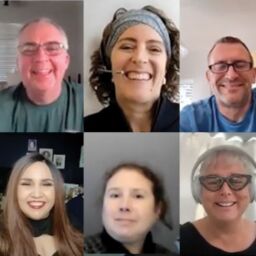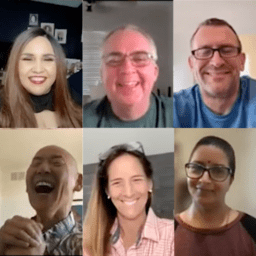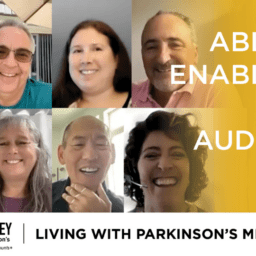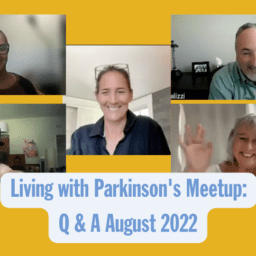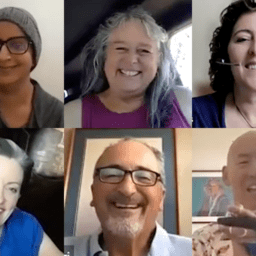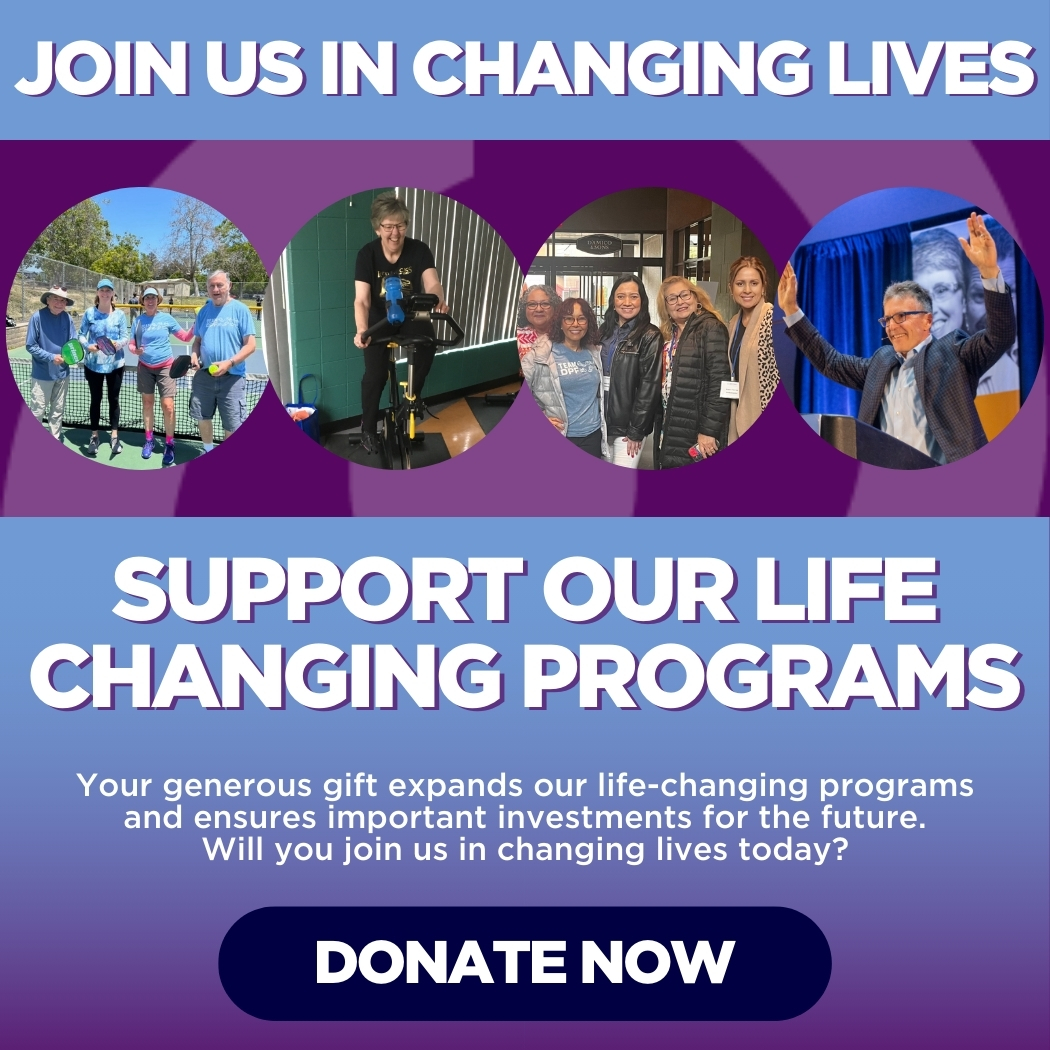We recently had the opportunity to speak with Johanna O'Day, founder of The Parkinson's Story Exchange, to learn more about her project and everything they're doing in her lab to help people live well with Parkinson's. If you love hearing inspirational stories of people with Parkinson's and think you have a story to share as well, read on to learn more about her partnership with StoryCorps and how you can get involved.
What's your focus in the Stanford lab as it relates to gait in people with Parkinson's?
I work on a project that involves the investigation of the biomechanical and neural correlates of freezing of gait and impaired gait in people with Parkinson’s. I'm currently running a study that recruits both people with Parkinson’s and healthy control subjects and equips them with wearable sensors. We then put them through a variety of walking tasks to try to understand and quantify how their bodies behave and ultimately figure out how this knowledge can help us to design therapies that help people walk better.
What have been the biggest obstacles when it comes to helping people with Parkinson's improve their gait? How does what you're working on solve this problem?
The biggest obstacle to date seems to be getting people to improve the overall regularity of their gait. We've offered multiple strategies to try including training with audio or visual devices and more recently, delivering vibrations to the body called vibrotactile feedback. These strategies usually test well in the lab; however, it’s a challenge to actually have people implement these strategies on a regular basis.
Moreover, there’s no medication or deep brain stimulation therapy that is targeted specifically to improve gait. We're working on finding the best way to actually track people’s walking in real time and figure out which biomechanical features best characterize irregular or impaired gait. This way, if we can track a few parameters accurately, we can better coach or train improvement around them and also inform adaptive deep brain stimulation algorithms that will respond to the person with Parkinson's current state. From there we can deliver therapy in real time to improve walking.
What are some of the benefits people with Parkinson's are most grateful for once they are able to improve their gait?
I have not worked with people using adaptive deep brain stimulation for walking as described above, but I do have experience working with people who have improved their gait using vibrotactile feedback, and people who have had positive experiences using adaptive deep brain stimulation for other Parkinson's symptoms like tremor or bradykinesia. Usually, people are delighted that they can just be mobile again and that they have regained functionality that frees them from the physical and psychological frustrations and limitations they usually grapple with. Many people with Parkinson's dream of the times “they could ___”. It would be amazing to be able to give that back to them.
What's the best part about the work you're doing?
Working directly with people who are living with Parkinson's and the people at the forefront of research are hands down my favorite parts. I learn so much from the people with Parkinson's and all of the people on my research team. We are a team focused lab—because our experiments require multiple people to run them—so everyone has to be present and in synch. The people we work with can tell when we work together well so they keep us in check, sometimes even calling out directions because they've picked up the structure of our system. It’s always exciting when this happens because it feels like everyone is in flow, and it shows that the patient is actively involved and excited about the work we're doing together.
What's the most surprising thing you've learned from working with people with Parkinson's?
I've been surprised at how “gung ho” people with Parkinson’s are. They have so much positivity and life in them, despite their situation. They are enthusiastic about participating in research, contributing to the cause and doing whatever they can to help. They are patient in the face of inevitable technical difficulties that arise (as any true experimentalist will tell you) and are very understanding. They put me at ease and make me feel comfortable. Because of them, I enjoy my work and find meaning in what I do every day.
How has this work influenced your professional direction?
I never wanted to be a doctor and still don’t; however, I've always said I wanted to help people, and I very much enjoy working with doctors. I transitioned from my B.S. in biochemistry to pursue a Ph.D. in bioengineering in the hopes of doing more translational research.
Working with people with Parkinson's on a regular basis and also getting to be involved in the details of research and technical engineering has shown me that I can have the best of both worlds. I would love it if my future job encompasses both sides—perhaps staying in the clinical research space or working in medical devices. Truly listening to people with Parkinson's and their stories, though, has taught me about another type of learning and design. It is so critical to really find their true needs and wants and use them to motivate and inspire others to do the research needed to create solutions to their problems.
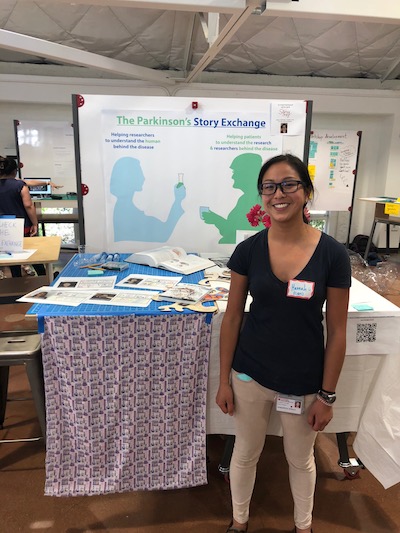
How did you get involved with StoryCorps and the telling of stories for people with Parkinson's?
I was selected be part of a program called Creativity in Research scholars which is a program that the Stanford design school started this past year to help graduate students be more creative in their research and take it in directions they would have never thought about before.
As a clinical researcher, I was able to interact with the patient population that I was researching and trying to help. I wanted other Parkinson’s researchers to have the same experience. I figured I was in a great position to increase empathy between both the researcher and the patient populations since I had very close access to both. I thought storytelling was the best way to do just that; so, the first step was to contact people who were good at storytelling and story sharing. That's what led me to StoryCorps. They responded enthusiastically about partnering and helping with the project. The rest is history.
What does this project involve?
The project seeks to increase empathy between Parkinson's researchers and people living with Parkinson's. The project mainly involves a website with 40-minute audio recordings from people with Parkinson’s and the researcher’s stories. All in cartoon format. I chose the cartoon format because I was inspired by Peter Dunlap-Sohl, author of My Degeneration, a graphic novel about his journey with Parkinson's. There were so many positive responses to the way he conveyed Parkinson's that I wanted to experiment with that format as well. Comics usually feel very light-hearted, and it was a great medium with which to address some of the heavier topics surrounding the diagnosis and disease (e.g. suicidal thoughts/depression).
In the future, I will also add some kind of infographic that presents our lab’s research in a way that is understandable and digestible for people with Parkinson’s. In order to do that, I'll get feedback from the members of our community. I want to do this because some people with Parkinson's have said that they often feel left in the dark when it comes to research going on in the field, especially since most research is published in journals that are inaccessible to the general public. The last piece of the project involves my metaphor for Parkinson's, a wooden puzzle set.

This puzzle set is never ending or infinite because each piece can always fit with every other piece. It's a concept called Penrose Tiling, and my friend Guillaume Riesen helped me to design these pieces to look like neurons. There's a unique puzzle piece for each person that partook in the project, and I have them all interlocking (both researchers and patients) because it symbolizes the fact that we are all in this together. We are all part of this puzzle. I'm working to get this on display in our neuroscience healthcare center or else to digitize it in some way so that more people can interact with it.
What are the most valuable lessons you've learned from the people you've interviewed?
These are my two favorite lessons:
- You can spend your life in two ways: you can either completely master one thing, work hard at it, be good at it and be known for it, or you can choose to make your life more of a quilt and to explore many things. These are both honorable and worthy ways to spend a life, but I think that the quilt version helps you to build empathy better. And especially for me, it's more fun!
- Sometimes you have to lose control to gain control. This is such a powerful concept because so many of us are always trying to control everything. Sometimes, however, if you give up control, you'll find that it isn't so bad, and in the end you get even greater results from doing so.
What do you hope to accomplish with The Parkinson's Story Exchange?
I hope this project provides hope and community for people with Parkinson's and researchers and increases empathy between the two groups. I hope it inspires others to get out and learn as much as they can about people with Parkinson's and the disease itself so that we can continue to make progress in helping people with Parkinson's improve their quality of life.
How do you live well each day?
For me, it's all about gratitude. I am so thankful for all of the things I have experienced and the opportunities I have. So many people in my life have taught me the power of focusing on the good in life and having an attitude of gratitude. I have always been supported by family and friends in whatever endeavors I take on, whether it be studying abroad in the Galapagos to pursuing a social dance class despite my lack of rhythm, to being a graduate student and moving 3000 miles across the country (I am from Boston). Two of my favorite quotes to live by are:
“Love always wins.” - Morrie Schwartz from Tuesdays with Morrie
“The secret to having it all is acknowledging you already do.”
I will also add that because I am so grateful for the experiences I've had, I try to empathize with people who have had a different set of experiences. I don't believe you can really compare two people and objectively say which one has a better or worse life, moreover, I like to say we have all seen different horizons but we both have a sun shining on us in some way. Especially in the world right now, I try my best to leave my horizon in the background and understand another’s horizon first.
Learn more about the Parkinson's Story Exchange and get involved
Visit the website here and contact Johanna O'Day at pdstoryexchange@gmail.com.
As part of Johanna's project, she interviewed Kevin Kwok, a Davis Phinney Foundation board member. You can listen to his story and inspirational message, along with others who've participated in the project, here.




